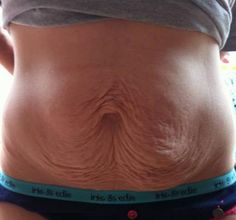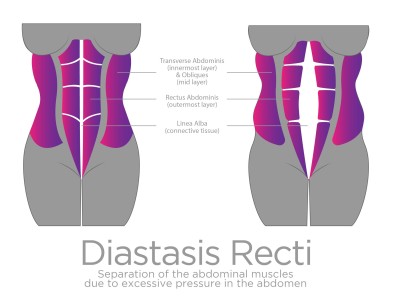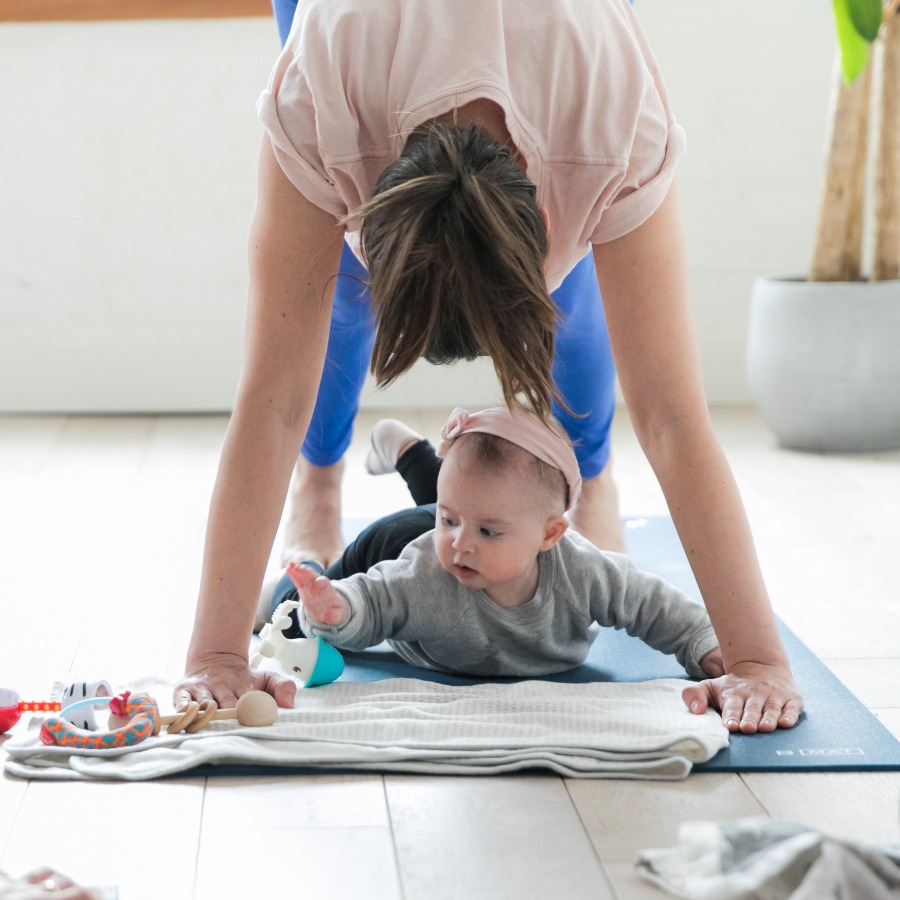New Perspectives on “Mummy Tummy”
Oh yes, the joys of motherhood are accompanied with vast physical, hormonal and emotional changes. The female body is transformed during pregnancy from head to toe. The most obvious change is the growth of the abdomen, stretching to accommodate the growing fetus. In fact, studies show that 1 in 3 pregnant women develop a condition of over-stretched abdominal muscles along the linea alba (the middle of your 6-pack muscle), medically referred to as diastasis recti, and often called “mummy tummy”.

In the case of repairing diastasis recti, it’s vital to strengthen the deep core muscles (we’re not talking crunches and planks here!) and to establish functional movement mechanics. Exercise programs that include deep diaphragmatic breathing and correct pelvic floor kegel work are important places to start for new moms looking to fix diastasis recti. However, Osteopathic methodologies can also offer a new, alternative outlook towards the restoration of your core post-natally.
First of all, what is Osteopathy?
Osteopathy is a natural form of medicine that views the body as one interdependent system. Osteopathy aims to restore normality and function throughout the entire body by determining the cause of imbalance and discomfort. The treatment itself involves a subtle manual manipulation of bone and soft tissue. Osteopathy, is often recommended for the relief of musculoskeletal dysfunctions and pain management. However, the scope of practice extends to the treatment of respiratory and digestive issues, menstrual irregularities, migraines, headaches, insomnia, anxiety, depression and peripheral or local pain management.
How can Osteopathy help repair my abdominals after pregnancy?
1) Feel your Fascia
Osteopathy treats Fascia. Fascia is often overlooked, but so very important to the restoration of your core after pregnancy. Fascia is a layer of connective tissue that encases all the muscles, bones, organs, nerves and blood vessels of the body. It stretches a great deal during pregnancy. I like to think of fascia as one big sheet of “saran wrap” that covers the entire body. Have you ever seen meat hanging in the window of a butcher shop and noticed that white outer sheath encasing the muscle? That’s fascia.
The fascia has an incredible capacity to distribute and absorb forces placed on the body. With diastasis recti, the fascia surrounding the abdominal muscles may become distorted, rendering it unable to perform its normal function. The result? Other parts of the body will essentially “pick up the slack” (pun totally intended!). A disturbance within this fascial chain can create compensations elsewhere in the body. This may help explain why we often see rounded and weak shoulders, tight pecs and traps, and a tucked pelvis in postpartum women.
Imagine the fascia of the abdomen as a heavy anchor, pulling all of its connected structures down towards it. Movements of the arms, which involve the collar bones, pecs and traps, will have a strengthening effect on your 6-pack muscles via this fascial layer. Exercises such as supine (lying on your back) arm circles and arm snow angels, coordinated with diaphragmatic breathing and pelvic floor contraction, will engage the fascia and the muscles underneath! These types of exercises are extremely beneficial during those first few fragile weeks postpartum and recovery.
2) Organ Love
Love your liver! The liver is the commander organ of the abdomen, taking up sixty percent of your sub-diaphragmatic space. There are so many reasons why you should LOVE and take care of your liver. It is responsible for several key functions including: blood detoxification, vitamin storage, blood sugar regulation, fat metabolism and hormonal metabolism to name a few. If you are still not convinced, allow me to give you one more reason to adore your liver: the healthier your liver, the stronger your deep core.
Your liver is suspended in the abdomen, just under the diaphragm by several ligaments. One of which, the falciform ligament, is connected directly to the rectus 6-pack muscle and refers into the connective tissue that surrounds your bladder, uterus, sacrum and pelvic floor! Proper deep core activated belly breathing will have a positive effect on your liver. The inverse is also true: a healthy functioning liver will have a positive impact on your deep core! Here are 12 tips on how to keep a healthy liver.
3) Thoracic and Lumbar Mobility
It’s common for women to report weakness in the shoulders and tightness in the upper and mid-back during and after pregnancy. This can be attributed to a number of factors including: enhanced & tender breast tissue, nursing & holding the baby, and the influence of the hormone relaxin on the joints and ligaments of the body.
The thoracic region of your body houses many vital organs. The nerves that exit this area are responsible for stimulating the digestive organs of the abdomen, such as your liver, stomach, pancreas, small intestines and spleen. As the uterus grows to accommodate the fetus, the abdominal organs are pushed way up against your diaphragm. It is possible that the upper back and shoulder discomfort is actually referred pain originating from irritated and squished abdominal organs.
Additionally, this upward displacement of the abdominal organs can do quite a number on your diaphragm, increasing tension and causing shortened chest breathing. Shallow and tense chest breathing can essentially “turn off” your pelvic floor, causing extra pressure in your abdominal wall every time you take a breath. Your organs get pushed forward and out and make your diastasic recti worse.
In short, tension in your diaphragm = chest breathing = pelvic floor goes to sleep = more pressure in your abs = more overstretched tissue (aka diastasis recti).
Strengthening and mobilizing the spine can establish balanced neurological and vascular input to your abdominal muscles and organs. Exercises like gentle spine twists and Pilates style breast stroke extension will help soften the tight tissue surrounding the nerves, arteries and veins. With proper neurological stimulation, the abdominal organs can settle back in the abdomen where are meant to be. This will help the core muscles function optimally, and help repair that mummy tummy!
Alright, what the heck does all of this mean?
What it means is that the body is extensively interconnected.
Typically, one might assume that Rocky Balboa style sit ups, abdominal curls, sucking belly button to spine and planks are the best way to erase mummy tummy. And yet research has shown that this intense local approach can actually worsen an existing abdominal separation. Rather, a global approach to pre and post-natal fitness, one that involves the mobilization of the spine and engages the fascial chains offers a safe and more effective approach to core restoration!
